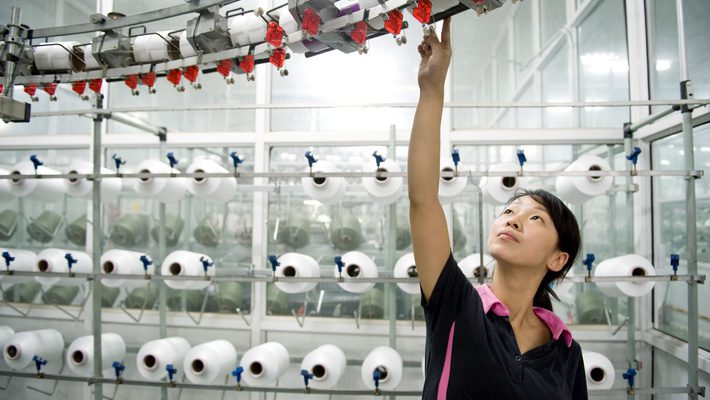The publication of two major reports by governments in Canada and the UK are signaling that scrutiny — and enforcement — of forced labor and child labor compliance in supply chains will increase in 2025. Manufacturers that have not implemented forced labor due diligence processes will need to take action to avoid future sanctions and supply chain disruptions.
Here are updates on Canada’s Fighting Against Forced Labour and Child Labour in Supply Chains Act and the UK Modern Slavery Act.
Canada’s First Forced Labor Report Published
Public Safety Canada has published the first annual public report under Canada’s Fighting Against Forced Labour and Child Labour in Supply Chains Act, giving manufacturers a snapshot of companies’ forced labor compliance efforts to date. It also reveals some eye-opening statistics about forced labor risk in the supply chains of companies serving the Canadian market (including 764 American companies that fell in scope of the act).
Report Highlights
The top three identified risks for forced labor were:
- Origin of raw materials/commodities used in supply chains
- Sector-specific issues related to the procurement of electronics, property management services, food industry services and textiles, etc.
- Tier 1 (direct) suppliers
In addition, the report gave insight into risk management maturity in the manufacturing sector:
- The largest reporting sector category was manufacturing, representing 38.3% of respondents
- 38.2% of all respondents confirmed they had identified parts of their activities and supply chains that carry forced and/or child labor risks
- 22.4% had not yet started identifying risks
Finally, the most reported methods for identifying and mitigating risks were:
- Internal assessments of forced labor risks in the supply chain
- Developing and implementing due diligence processes for managing forced labor and child labor risks
- Monitoring suppliers
- Implementing anti-forced labor/child labor standards into supplier codes of conduct
How to Prepare for Canadian Forced Labor & Child Labor Compliance
As this is the first reporting year under the new Canada forced labor law, the government has declined to issue enforcement orders or fines. However, it is likely that companies will face sanctions for non-compliance next year, now that the government has completed its benchmarking and fact-finding initial report.
What are the compliance requirements of the Canada’s Fighting Against Forced Labour and Child Labour in Supply Chains Act? Here’s how you can reduce your enforcement risk next year:
- Ensure you have formal policies and due diligence processes addressing forced labor risk
- Implement employee training on detecting forced labor risk
- Engage your suppliers
- Evaluate the effectiveness of the measures you took for the first reporting year
The next reporting cycle ends on May 31, 2025, requiring in-scope companies to submit an online questionnaire and an annual report outlining specific steps they’ve taken to mitigate forced labor.
Urgent Call for Stricter Reforms for UK Modern Slavery Act
The UK House of Lords is issuing a series of recommendations to improve the effectiveness of the UK Modern Slavery Act, after publishing a report that criticized the act for falling behind the anti-forced labor laws of other nations.
Specifically, the report calls out a lack of mandated requirements for modern slavery statements and a need for more accountability. The House of Lords is recommending improvements that include:
- Sanctions for non-compliance with supply chain requirements
- Legislation to require companies to undertake modern slavery due diligence in their supply chains, including reasonable steps to mitigate risks
- Import laws to ban goods brought into the UK if they are produced by companies known to use forced labor
- Improve implementation of MSA guidelines to move compliance from a passive to a proactive approach
These recommendations would bring the UK Modern Slavery Act more in line with the EU Forced Labour Regulation, potentially streamlining compliance for reporters.
The UK government has until December 16, 2024, to respond to the report and these recommendations.
How to Prepare for UK Modern Slavery Act Compliance
If you are in scope of the UK Modern Slavery Act, it will be important to prepare for increased scrutiny of your submissions and potential new sanctions against your business. Certain parts or products may no longer be available from specific suppliers if they are found to be linked with forced labor practices. To avoid supply chain disruptions:
- Proactively assess your supply chain for forced labor risks
- Engage suppliers and educate them on forced labor and child labor compliance
- Evaluate beneficial ownership and legal affiliations of key suppliers
Tightening Forced Labor Compliance Laws
Globally, governments are introducing or strengthening regulations to eliminate forced labor from manufacturing supply chains. The stakes for companies have never been higher as regulators move beyond risk reporting to sanctioning entities that are found to be using forced labor.
Modern day slavery risk assessments should be part of every company’s supply chain sustainability management program. Due diligence is vital for meeting today’s reporting requirements as well as for avoiding tomorrow’s sanctions. Modern slavery regulations, like the upcoming EU Forced Labour Regulation or the U.S. Uyghur Forced Labor Act (UFLPA), are making it clear that ignorance of the risks in your supply chain will not be defensible or protect you from penalties.
Assent’s Forced Labor solution can help you assess your suppliers and their legal ownership connections so you can meet global due diligence reporting requirements. We make it simple to score your supply chain risks and issue corrective actions, helping protect you from disruptions.
Frequently Asked Questions (FAQ)
What is the Fighting Against Forced Labour and Child Labour in Supply Chains Act in Canada?
This Canadian law requires companies to report and mitigate forced and child labor risks within their supply chains. It includes training employees on identifying forced labor risks and engaging suppliers.
What are the main findings of the first Canadian report on forced labor compliance?
The report found risks associated with raw materials, sector-specific vulnerabilities, and Tier 1 suppliers. The manufacturing sector had the highest number of reporting entities (38%).
What is the UK Modern Slavery Act, and why is it being re-evaluated?
The UK Modern Slavery Act mandates companies to report on their efforts to combat forced labor. A 2024 assessment by the UK House of Lords suggests it lacks sufficient enforcement measures and calls for sanctions for non-compliance.
How do the EU and U.S. address forced labor in supply chains?
The EU’s Forced Labor Regulation and the U.S. Uyghur Forced Labor Prevention Act are examples of the trend towards using trade-related policy to address forced labor, particularly within supply chains linked to regions with human rights abuses, such as China.
What actions should companies take to comply with forced labor regulations?
Companies should integrate forced labor risk assessments into their sustainability programs. This includes monitoring supplier practices, implementing anti-forced labor standards, and investing in third-party supply chain sustainability solutions to stay ahead of regulations.
How can companies prepare for the increased scrutiny expected in 2025?
By enhancing due diligence, monitoring supply chains for high-risk areas, and staying informed on evolving legislation, companies can better navigate the shifting regulatory landscape and avoid potential sanctions.
What are the benefits of using solutions like Assent’s Forced Labor solution?
Assent’s solution aids in identifying supply chain risks, assessing suppliers, and ensuring compliance with global forced labor laws, helping companies avoid sanctions and disruptions.
Learn more about Assent’s Forced Labor solution.














